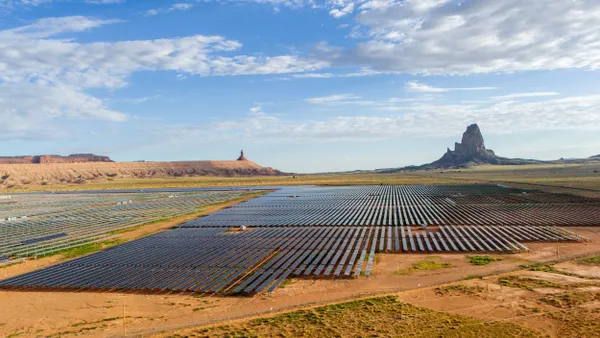Dive Brief:
- The California Senate passed a package of 12 bills that would advance the state’s nation-leading efforts against climate change. The bills were passed by the Senate Democratic majority without much support from Republicans. The package of legislation amounts to a “job killer,” according to the Senate Republican caucus.
- S.B. 350, a key factor in the package, would codify the targets set by Gov. Jerry Brown in his January inaugural to get the state's electricity generation to 50% renewables by 2030, cut oil use by 50%, and increase building energy efficiency by 50%.
- S.B. 32, another major package component, would extend the landmark climate change law by requiring the California Air Resources Board to lay out and implement a plan to get the state’s greenhouse gas emissions 80% below the 1990 levels by 2050.
Dive Insight:
The package includes a measure requiring two state pension funds, the biggest in the U.S., to divest their holdings in coal. Another would increase light rail and inner-city rail spending. Several offered adaptations for worsening climate change.
The bills must still pass the Assembly, the legislature's lower house, or be reconciled with similar Assembly measures. Though Democrats control both houses, insiders expect the measures to succeed only after language changes by moderate Assembly Democrats.
Some lawmakers may want to specify baseline levels of gas and diesel at which the 50% reduction begins. Others may want specificity on which renewables are eligible in the 50% mandate and how to get an 80% CO2 reduction by 2050.
It is “the most far-reaching” climate legislation in U.S. history, according to Democratic Senate President Pro Tem Kevin de León.
Republican Senate Minority Leader Bob Huff called the package “a lofty and noble goal” but said it doesn’t stop other states from using coal.
As Utility Dive has reported, California energy stakeholders largely view the 50% renewables mandate as achievable, but say it will take unprecedented levels of cooperation between utilities, developers, market operators and grid monitors to achieve that goal by 2030.













